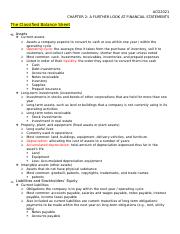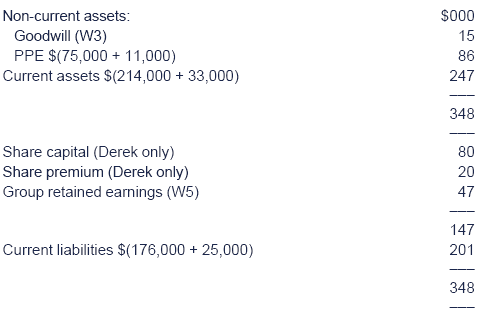How to Figure Out Retained Earnings From Net Income & Capital Stock
How to Figure Out Retained Earnings From Net Income & Capital Stock
Dividend vs. Buyback: What’s the Difference?
You’ll find a line item called retained earnings, or less commonly called accumulated earnings, earnings surplus, or unappropriated profit on a company’s balance sheet under the shareholders’ equity section. Let’s assume, for instance, that Company X ends its fiscal year with $10 million in retained income on the books. Now let’s say Company X reports a net income of $2 million at the end of the year but then pays out $1 million in dividends to shareholders. The net result is that Company X now has $11 million in retained earnings. A balance sheet contains a wealth of financial information for a small business owner.

Retained earnings are the portion of a company’s net income that management retains for internal operations instead of paying it to shareholders in the form of dividends. In short, retained earnings is the cumulative total of earnings that have yet to be paid to shareholders.
Before interpreting the meaning of the retained earnings to assets ratio, you need to understand retained earnings. This refers to the profits your company has earned over time for use in business growth, expansion or reinvestment. Strong retained earnings typically mean that the company remains in a growth stage and wants to use earnings to expand. Your company may issue dividend payments to shareholders when it earns profits. Whatever earnings your company distributes to shareholders is not part of retained earnings.

Preferred stock is paid a dividend based on a percentage stipulated upon issuance of the shares. For example, if a company declares a dividend on 50,000 shares of preferred stock paying an 8 percent dividend, multiply the 50,000 shares by 0.08 to get the dividend amount of $4,000.
Finally, restate your earnings statement to reflect the corrected retained earnings normal balance. When a company issues common and preferred stock, the value investors pay for that stock is called paid-in capital. The amount of this capital is equal to the amount the investor pays for the stock in addition to the face value of the share itself. These positive earnings can be reinvested back into the company and used to help it grow, but a significant amount of the profits are paid out to shareholders. Whatever amount of the profits that is not paid out to shareholders is deemed retained earnings.
Write down the formula, “Beginning retained earnings plus net income minus dividends equals retained earnings.” Go to the company website and find the financial statements. Find the income statement and scroll down to the amount listed on the net income line. Find the balance sheet and scroll down to the owner’s equity/stockholder’s equity section. Write that amount under the beginning retained earnings part of your formula. When a company records a profit, the amount of the profit, less any dividends paid to stockholders, is recorded in retained earnings, which is an equity account.
The amount of additional paid-in capital is determined solely by the number of shares a company sells. Retained earnings is the cumulative total of net earnings (minus dividends and some other thing) over the course of years.
Company A’s management earned a return of 20% ($1.10 divided by $5.50) in 2012 on the $5.50 a share in retained earnings. Retained earnings are a company’s net income from operations and other business activities retained by the company as additional equity capital.
- Such items include sales revenue, cost of goods sold (COGS), depreciation, and necessaryoperating expenses.
- Essentially, retained earnings are what allow a business’s balance sheet to ultimately balance.
- Apple and General Mills are both established companies with long track records of consistent profitability, as their massive running tally of retained earnings shows.
- Fortunately, for companies with at least several years of historical performance, there is a fairly simple way to gauge how well management employs retained capital.
- Generating income for reinvestment has significant advantages over debt and equity financing.
- Retained earnings are a company’s net income from operations and other business activities retained by the company as additional equity capital.
Generating income for reinvestment has significant advantages over debt and equity financing. When you finance https://www.bookstime.com/retained-earnings your company through new debt, you have to pay back the debt holders with principal and interest over time.
If this figure is negative, it may indicate an oncoming bankruptcy for that business, particularly if there exists a large debt liability as well. The retained earnings formula is also known as the retained earnings equation and the retained earnings calculation. If a company has negative retained earnings, it has an accumulated deficit. The most common types of temporary accounts are for revenue, expenses, gains, and losses – essentially any account that appears in the income statement. In addition, the income summary account, which is an account used to summarize temporary account balances before shifting the net balance elsewhere, is also a temporary account.
Another possibility is that retained earnings may be held in reserve in expectation of future losses, such as from the sale of a subsidiary or the expected outcome of a lawsuit. It is January 18th, 2020 and the accounting department at ABC Inc. is hard at work preparing the financial statements for fiscal year 2019. The company has hired interns to help with the reporting process and you are mentoring Kayla, an intern in her 2nd undergraduate year.
However, once you debit the amount from dividends, that money still needs to be credited to the appropriate account. These values need to be equal to show where money was deducted and added. Credit the amount to the appropriate account and write a correction entry noting the reason for the adjustment on your balance sheet.

Essentially, retained earnings and the inverse, accumulated deficit, are a running tally of a company’s historical profits kept after paying out dividends. It’s reported in a company’s quarterly 10-Q and annual 10-K SEC filings, under https://www.bookstime.com/ the “stockholders equity” section of the balance sheet. Start with retained earnings last period balance (unadjusted beginning balance). Then, add or subtract prior period adjustments, which equals the adjusted beginning balance.
A retained earnings balance is increased when using a credit and decreased with a debit. If you need to reduce your stated retained earnings, then you retained earnings are debit the earnings. Typically you would not change the amount recorded in your retained earnings unless you are adjusting a previous accounting error.
When sizing up a company’s fundamentals, investors need to look at how much capital is kept from shareholders. Making profits for shareholders ought to be the main objective for a listed company and, as such, investors tend to pay the most attention to reported profits. Retained earnings are the cumulative net earnings or profit of a firm after accounting for dividends. Directors of quoted companies occasionally get criticised for restricting the value of dividends and for hoarding too much cash in the business.
Retained Earnings Role in Creating Greater Stockholder’s Equity
This reverse capital exchange between a company and its stockholders is known as share buybacks. Shares bought back by companies become treasury shares, and their dollar value is noted in the treasury stock contra account. Treasury shares continue to count as issued shares, but they are not considered to be outstanding and are thus not included in dividends or the calculation of earnings per share (EPS). Treasury shares can always be reissued back to stockholders for purchase when companies need to raise more capital.
Comentaris recents